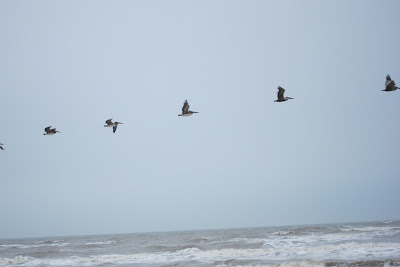We have
lots to worry about today – the fiscal cliff, the Mayan end-of-world
“prediction,” and whether we can make it through the holidays without having
nervous breakdowns, to name just three.
I’m not
going to worry about those things. I’m just happy that the shortest day of the
year has finally arrived and that day length will start growing instead of
shrinking.
Some
primitive people weren’t so sure that would happen. They worried that the sun
would disappear altogether and performed ritual ceremonies to ensure that
didn’t happen. After they figured out the solstice they celebrated its arrival
with food, drink and revelry. When Christianity came along it was easy to
switch to Christmas parties and gift-giving, perhaps to excess. Instead I
prefer to celebrate a little bit each day.
Today’s
celebration for me was making granola. My palate having already wearied of
buttery, sweet holiday treats, I longed for something more nourishing.
Honestly, I enjoy a bowl of granola far more than a piece of English toffee.
Out of
necessity I accidentally improved my granola recipe, which calls for half a cup
of honey. I had only a quarter-cup of honey so I added a quarter-cup of Steen’s
cane syrup, a product of the South.
Cane syrup
is not widely available or even known outside the South. Sugar cane is a perennial grass that grows only in tropical or semi-tropical places. Dennis and I once
drove into New Orleans along a minor highway that led through sugar cane
country. It was harvest time and we often came upon tractors pulling wagonloads
of cut cane to the mill. We could see the smoke rising from a mill in the
distance and the air was full of the fragrance of cane as it cooked down into
syrup. Shopping later in a grocery store I spotted cane syrup and bought some
to try on pancakes and biscuits. I’ve been a cane syrup fan ever since.
The first
batch of granola was so good that I made another batch substituting cane syrup
for all of the honey. It’s a winner!
Granola
8
cups old-fashioned oats
1
cup sliced almonds or other nuts
½
cup packed light brown sugar
½
teaspoon salt
1
teaspoon ground cinnamon
½
cup vegetable oil
½
cup honey or cane syrup
1
teaspoon vanilla
1½
cups raisins or dried cranberries
Preheat
oven to 300 F. In a bowl mix the oats, almonds, brown sugar, salt and cinnamon.
In a microwave warm the oil and honey. Whisk in vanilla.
Carefully
pour the liquid over the oat mixture. Stir gently with a wooden spoon; finish
mixing by hand. Spread granola in two 15” x 10” inch baking pan.
Bake
40 minutes, stirring carefully every 10 minutes. Transfer granola-filled pan to
a rack to cool completely. Stir in raisins or cranberries. Seal granola in an
airtight container or self-sealing plastic bag.
Now it’s
time to quit cooking and finish packing. My next post will come from Galveston
Island sometime after December 26.
Happy
holidays, everyone. Don’t worry; be happy.
Copyright
2012 by Shirley Domer






































